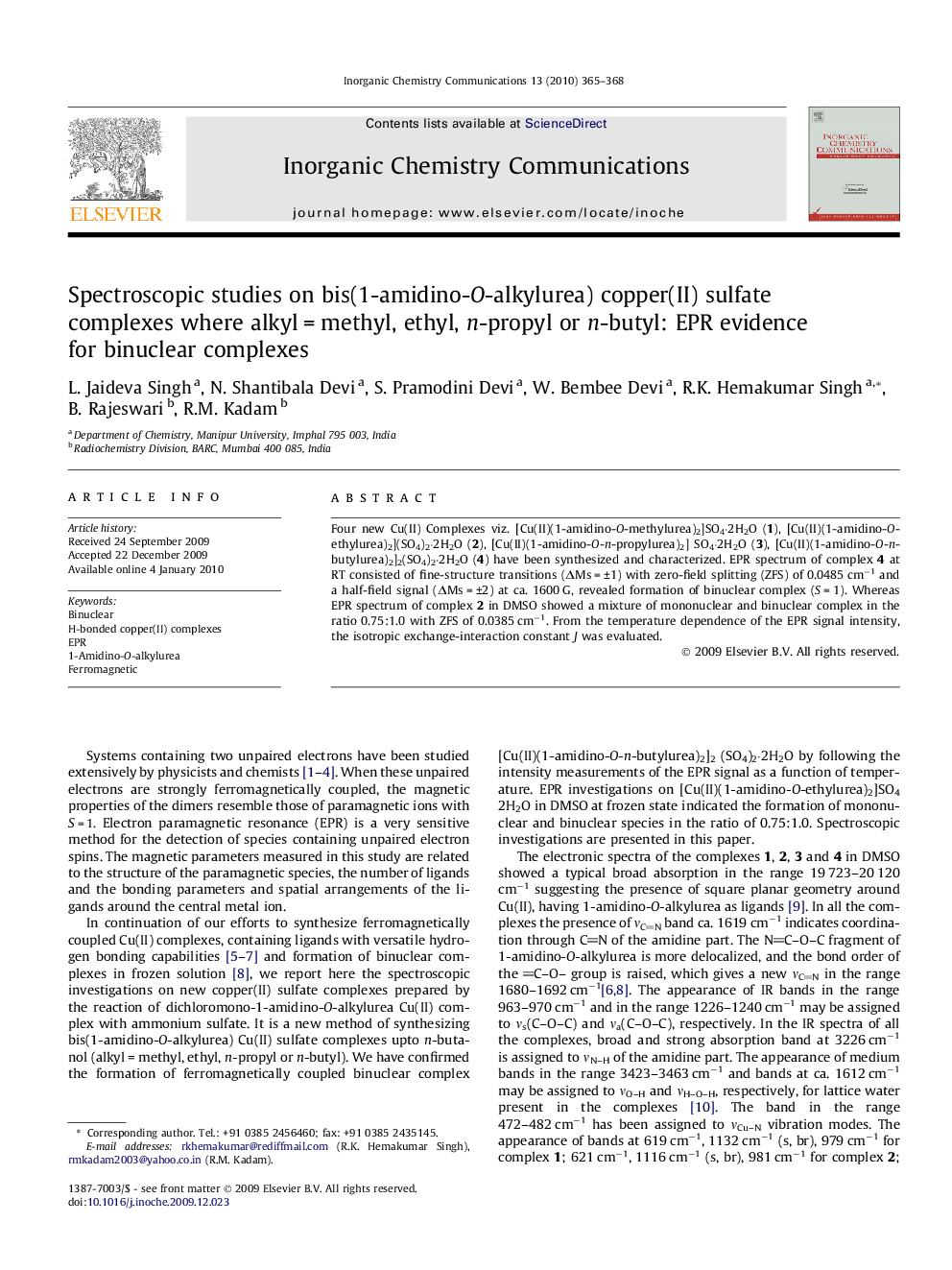| Article ID | Journal | Published Year | Pages | File Type |
|---|---|---|---|---|
| 1303027 | Inorganic Chemistry Communications | 2010 | 4 Pages |
Four new Cu(II) Complexes viz. [Cu(II)(1-amidino-O-methylurea)2]SO4·2H2O (1), [Cu(II)(1-amidino-O-ethylurea)2](SO4)2·2H2O (2), [Cu(II)(1-amidino-O-n-propylurea)2] SO4·2H2O (3), [Cu(II)(1-amidino-O-n-butylurea)2]2(SO4)2·2H2O (4) have been synthesized and characterized. EPR spectrum of complex 4 at RT consisted of fine-structure transitions (ΔMs = ±1) with zero-field splitting (ZFS) of 0.0485 cm−1 and a half-field signal (ΔMs = ±2) at ca. 1600 G, revealed formation of binuclear complex (S = 1). Whereas EPR spectrum of complex 2 in DMSO showed a mixture of mononuclear and binuclear complex in the ratio 0.75:1.0 with ZFS of 0.0385 cm−1. From the temperature dependence of the EPR signal intensity, the isotropic exchange-interaction constant J was evaluated.
Graphical abstractEPR spectrum of [Cu(II)(1-amidino-O-n-butylurea)2]2(SO4)2·2H2O (4) at RT consisted of fine-structure transitions (ΔMs = ±1) with zero-field splitting (ZFS) of 0.0485 cm−1 and a half-field signal (ΔMs = ± 2) at ca. 1600 G, suggesting the formation of binuclear complex (S = 1). Whereas EPR spectrum of [Cu(II)(1-amidino-O-ethylurea)2]SO4·2H2O (2) complex with zero-field splitting (ZFS) of 0.0385 cm−1 in DMSO showed a mixture of mononuclear and binuclear complex in the ratio 0.75:1.0.Figure optionsDownload full-size imageDownload as PowerPoint slide
